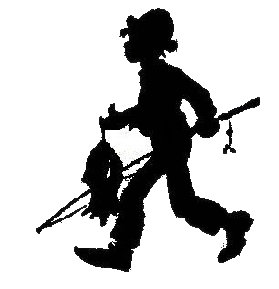








Fly Boxes
c. 1928 - 1941
Since Wright McGill's foundation started with trout flies, it's no surprise that some of their first boxes were used to deliver flies. This case reflects some of the earlies known boxes specific to their fly production runs.
Determining the chronological order is difficult, however those without the typical borders are considered the earliest, followed by the border with corner scrolls ending with the typical black box corner configurations.
The large gray box, top center, is one of a few known that reflects red lettering and red corner border squares. It is for Salmon Flies, thus speculation is that the use of red signified a visual distinction between flies to the consumer when shopping.
Designated Master Brand English style double wing flies, the consumer could get them either in the visible box or the Style E Metal Box (Eagle Dry Fly Box) container shown here. c. 1939-41





Early Wright McGill examples of the Peppy Wigglers, Dippy Wigglers & The Tramp on their original perforated card board cards. Introduced in 1937 and cataloged for 2 years. Came in six colors, four of which are represented on this card, which is about 10 ¾” by 2 ¾.” The lures are still attached to the card by their original looped strings. Either W & M, a wholesaler or a retailer likely applied the typed comments taped to the back of the card.




Hellgramite
c. 1941
Plyex “The new flexible, pliable plastic”. As before with their molding process, Wright McGill jump into the plastic or rubber market offering a variety of baits made of Plyex. Though the baits look rather life like, they apparently didn't catch on (no pun intended).
Listed in 1941, this line of tackle was not shown in the 1942 line up.
Shown here is an almost complete box of medium sized Hellgramite flies made of Plytex. Due to age and material these baits extremely brittle. Locating not only the baits but their shipping box is a rare feat for any collector. Here again is a rare example where Wright McGill utilized green font in their printing and display. Available in 3 sizes, small No. 1520, medium No. 1521 and large No. 1522, listed in one color Grayish Brown. Rare
Bug Spinner - Whirlwind Spinner - Colorado Spinner
Some of the toughest Wright McGill metal you will see. The Bug Spinners date to
around 1928 - 1930 give or take. There are five variations; Nickel, Brass, Copper & Nickel and Copper.
In the middle are two variations
of the Whirlwind Minnow Spinner.
Top right pic shows two Whirlwind Spinners and 2 of the most amazing boxes. First the size is
small, orange stands 1 3/4 inches, while the white/light gray one measures 2 inches. The spinners are rare but these boxes are beyond
rare.
Ozark Bug
c. 1934
As a variation of the last Moss Bug version, the Ozark Bug first appeared in W&M offerings in 1934. Distributed by third parties, examples have been found offered by the Brooklure company. Though there is specific catalog numberings by Brooklure, it seems they had lots of different numbers for different sets. To date it doesn't appear that anyone has sorted them out.
1st Production Wright McGill Box Version
c. 1928
Thanks to a fellow member willing to make a trade I was able to add this unique
box to the Wright McGill. Some aspects that make this box worth the trade for me. It is only the second one I've come across where
it doesn't exhibit the black border lines and corner squares as usually seen on WM boxes. Second is the size for the product, 3 3/4
X 3 3/4 inches. Third it appears to be one of the earliest production box for the WM Wiltless fly which came as a pleasant surprise.
And the final discovery was the reference to the patent statement on the inside. Through some knowledgeable contacts and a little
internet discovery we have determined that we believe the box dates back to around early 1928. This timeframe is based on the filing
and patent publication date of January 31, 1928. What was really interesting is what the patent was for... a process to keep the fly
from absorbing water, wadding, whipping out, thus making them more durable. The secret, "coating the feathers in a nitro-cellulose
dissolved in amyl acetate". Here is some pics of the box and actual patent noted in the inside of the box. Now to see if I can locate
some of these coated flies, shouldn't be too difficult....yeah right.
Side Note: No. 100W as shown on the inside) is in the 1927 catalog, but drops from offering sometime prior to 1937. Listed Under Trout Flies – boxed one dozen of size and pattern to cork strip box. (note the cork strip in this box).